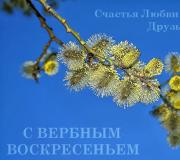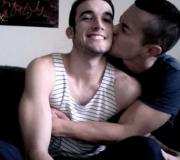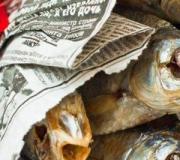Math game match the patch to the rug. Summary of nodes on the formation of elementary mathematical representations in the second junior group on the topic "patches for rugs"
Topic: Patches for rugs.
Program content: to consolidate the ability to determine the number of objects (one-many), to distinguish and name a circle, a square; consolidate knowledge of primary colors; continue to teach children to stand in a circle, walk and run in a circle; educate the ability to listen to the teacher.
Integration of educational areas: knowledge, physical culture, socialization.
Materials: rugs made of colored paper, in which round and square holes are cut, patches for them in the form of circles and squares, a cube, a ball, a toy bear, toy furniture.
Stroke:
1. Organizational moment.
-Guys, would you like to visit the bear?
2. The main part.
Children with a teacher go to visit the bear.
-Guys, look where the bear lives. What does he have in his house? (Table, chair, bed.)
- And the bear has rugs in the house. Look and tell me how many rugs he has? (A lot of.)
D / and "Pick up a patch for the rug"
- The mice gnawed holes in the rugs. The bear asks you to help him put patches on the rugs.
How many holes did the mice gnaw in each rug? (One.)
If necessary, show the children how to select a patch: it should fit in shape and color.
Ask the children what color and shape the patch went to their rug.
Children stand in a circle. The teacher takes a cube and a ball and offers to play with the bear, explains the rules of the game:
-When I lift the ball up - you run in a circle, when the cube is raised up - you follow each other step by step.
3. Reflection.
-What did we do today?
-Who did you visit?
How did we help the bear?
-Did you like the game?
Olesya Gerasimenko
Synopsis of GCD in the junior group on FEMP "Spoiled rugs"
TOPIC: « Ruined rugs»
Target: Strengthening the ability to determine the number of objects "one" "a lot of".
Tasks:
distinguish and name "a circle", "square";
Strengthen the ability to use concepts "one", "a lot of";
Develop attention;
Cultivate a sense of responsiveness.
Equipment: Hero Masha (doll, house built from building material (cubes, sheets of colored cardboard with cut holes ( rugs, circles and squares (patches). Tape recording (squeak of mice)
preliminary work:
Construction of the house of three bears;
Reading a fairy tale "Three Bears".
PROGRESS OF THE LESSON.
1. Org. moment.
The teacher brings the children to the house of three bears and the squeak of mice is heard. Masha "enters" to the house of bears and sees broken bed rugs. Masha resents: “Here are the mice - pranksters ruined the rugs, the bears will now return from the forest and be upset, what should I do?
2. Statement of the problem.
caregiver: Guys, let's help Masha fix rugs! Let's take them with us and take a closer look at them.
3. Discussion.
On some rugs one hole is round or square, on the other - several round or square.
Children are considering rugs.
How many on each perforated rug(one, many?
What shape are they (round, square?
What colour rugs?
Children, who ruined the rugs in the bears' house? (mouse) .
3. P.I. "Mouse"
Let's take a break and play a game "Mice".
The mice came out once (walking in place)
See what time it is (turn right left)
One two three four (clapping hands)
The mice pulled the weights (children imitate hand movements when grabbing)
Suddenly there was a terrible sound (clapping hands) The mice ran away (sit down) .
caregiver: Now let's go to everyone pick up patches for the rug. How many holes are on this rug? What shape are they? What colour mat? What color should the patches be? Let's Connect rugs and patches together. Did everything work out right?
What do you guys think, our cubs will like rugs? Can we make them even more beautiful? How? (color them) .
Children decorate each rug of your choice.
5. Reflection.
Here are some beautiful did you get the rugs?. Let's put them in the bear house and call Masha.
Masha, did you like our rugs?
Masha: Thank you guys for your help, now the cubs will see new beautiful rugs and very happy.
Related publications:
Summary of the GCD on FEMP and cognitive development in the preparatory group "Preparation for space flight" Synopsis of the integrated GCD on FMEP and cognitive development in the preparatory group On the topic: "Preparation for space flight" Educator.
Synopsis of GCD on FEMP in the younger group "Teremok" Educational tasks: to consolidate previously formed ideas: “big - small”, the concepts of “one-many”; consolidate knowledge.
Synopsis of GCD on FEMP in the younger group "Many - One" Purpose: To form an elementary mathematical representation in children. Tasks: To form the ability of children to distinguish between groups of homogeneous objects.
Tasks: To teach children to make groups of individual objects, to establish relationships between the concepts of "one", "many", "few"; use.
Tasks: Educational: to cultivate the ability to listen carefully and perform the given exercises; cultivate perseverance and teamwork skills.
Synopsis of OOD for FEMP in the second junior group Goal: continue to teach children to compare objects in length and indicate the result of the comparison in words; reinforce children's ideas about space.
Synopsis of organized educational activities in the second junior group on the formation of elementary mathematical concepts.
Author: Mukhina Irina Mikhailovna, educator of the highest qualification category of MDOBU "Medvedev kindergarten No. 3 "Golden Key"Description: the synopsis of organized educational activities in the second junior group on the formation of elementary mathematical representations is intended for teachers of preschool institutions, as well as for students of pedagogical universities and colleges.
Synopsis of organized educational activities in the second junior group on the formation of elementary mathematical concepts. Journey to the fairy tale "Masha and the Bear"
Target: formation of cognitive, communicative, emotional and motor spheresTasks:
Tutorials:
- learn to designate comparisons with words equally, how much, so much;
- continue to acquaint with the geometric figure of the triangle;
- to consolidate the ability to distinguish and name geometric shapes (circle, triangle);
- activate children in using the overlay method from left to right;
- exercise the ability to compare two objects in width, denote the result of the comparison with the words wider-narrower, wide-narrow.
Developing:
- develop speech, observation, mental and motor activity;
- develop fine motor skills, auditory and visual attention, memory, logical thinking;
Educational:
- to cultivate responsiveness, kindness, the desire to help others who find themselves in a difficult situation.
Preliminary work:
Reading and listening to the audio fairy tale "Masha and the Bear", d / games on FEMP and sensory development "How much, so much", "What does the figure look like", "Lay out the picture", "Expand in width".
Methods and techniques: a surprise moment, a game situation, a physical education session, a journey to a fairy-tale character.
OOD progress:
Educator: Guys, let's say hello.
Let's hold hands tightly
and smile at each other.
We wish all friends
Good morning, have a nice day.
Educator:(A white-sided magpie brings a letter on a stick). Guys, I wonder from whom the magpie brought us a letter. (Reads: hello, guys! I, Masha, from the fairy tale “Masha and the Bear.” I know that children in kindergarten know and can do everything. I want to ask you to help me return to my grandparents, otherwise Mishenka the bear won’t let go me until I complete his tasks.Please guys help.)
Educator: Guys, help Masha.
Children's answers:
Educator: And in order to get into a fairy tale, we need to close our eyes and say the magic words: “One, two, three, open the door for us!” (Music)
Educator:
Guys, here we are in a fairy tale. Look, you can see the roof of Mishka's house, what figure does it look like?
Children's answers.
Educator: right on the triangle (it has three corners and three sides), but to get to the house we need to go along the path. See two paths in front of us? Tell me, guys, are the paths the same width?
Children's answers.
Educator: right, this path is wider, and this one is narrower. Show me the wide path. And now narrow.
Tell me, if we go in pairs, then which path will be convenient for us to go.
Children's answers.
That's right, along a wide path, but now, stand in pairs and walk along a wide path. (Pass). And here is Masha! Let's say hello to her! Masha, we know you need help. Come on guys, we will help Masha complete the tasks. (Children sit at tables)
Educator: on the tables in front of you are cards with plates placed on them. And on the trays are pies that Masha baked for Misha. We need to arrange the pies on plates. How will we lay out? Children's answers. (I first remind you of the rules for laying out objects - from left to right from the red stripe).
Educator: You need to take as many pies as plates. I take one cake at a time and put it on plates. Do the same for you.
(Showing by the educator and performing by the children)
Educator: Guys. Do you have cakes left on the trays?
Children's answers.
Does anyone have any empty plates? Children's answers. (No)
On each plate you have one pie. What can be said about the number of plates and pies? How many of them?
Children's answers.
Educator: how many pies do you have? Children's answers. (as many pies as plates).
How many bowls do you have? Children's answers. (as many plates as pies).
Educator: well done, now stand up, we will teach Masha the exercises that she will show Mishka to cheer him up.
Physical education "Bear".
Raise your paws
And scratch behind your ear
Put down your paws,
And rub your tummy - one, two, three
Teddy bear, Teddy bear spin around,
Bend over, touch the ground
Now squat
and walk in place.
Educator:(Points to a rug with slots) Guys, we have Mishkin's favorite rug in front of us, but it's leaky, let's help Masha sew it up, look we have patches - these are geometric shapes (circles and triangles).
Educator:(distributes figures - triangles and circles). Karina, what is your figure? What is it called?
Children's answers.(talking about the triangle)
Educator: Cyril, tell me what is your figure?
Children's answers.(talking about a circle).
Find places on the mat for your figures. (Children find on the rug and insert into the slots)
Educator: Guys, Masha, thanks us, now, when Mishka comes home, he will see that Masha coped with all the tasks and will let her go to her grandparents. What are you, well done for helping Masha. And it's time for us to go back to kindergarten. Let's say goodbye to Masha. Guys, who will remember which path we walked to Masha?
Children's answers.
Educator: right, along the wide one, because we walked in pairs, it was convenient for us to go along the wide one. And, now, I suggest you go along a narrow path, but in order to go along it you need to solve a riddle about a geometric figure (Three sides and three angles, guess who I am?) Well done. You guessed it, it's a triangle. Let's now walk along a narrow path, stepping only on the triangles. Now close your eyes, I'll say the magic words. One, two, three, fairy tale, bring us back to the kindergarten. (Music)
Summary of the lesson: Did you like our trip to a fairy tale? What did we do there.
Children's answers.
Educator: Most importantly, we helped Masha. You, well done!
Program content:
To consolidate the concepts of many, one.
Train the ability to compare the number of objects: “more”, “less”, “the same”.
Strengthen knowledge of color.
Train the ability to distinguish geometric shapes.
Exercise children in comparison in width, length of objects and designate with words: wide, narrow, high, low.
To consolidate the ability to understand the spatial relationships between objects: on, above, below.
Develop speech, fantasy, attention, mental operations.
Material for the lesson:
Cartoon characters, train, train tickets, geometric shapes to indicate seats on the train, flowers, butterflies, cobwebs, a carpet with geometric shapes, sun, rain, houses of different colors, documents for houses (squares of different colors), leaves (wide - narrow ), Christmas trees (high - low), finger theater (animals), toy "Cheburashka", a musical recording of the sound of train wheels, children's crying.
Lesson progress:
Organizing time.
Guys, look, we have guests today. Let's say hello to them.
Today we will go to the country "Multi-Pulti". In this country we will solve puzzles. Puzzles are such unusual, interesting tasks. And the heroes that you all know well prepared these tasks for us. Want to find out who they are and complete their tasks?
Then I invite you to travel on a fabulous train.
The teacher arranges the chairs in advance in three columns one after another, on the backs of which are attached geometric shapes circle, square, triangle, of various colors.
But before we get on the train, we need to decide who will go where.
On a separate standing, pre-prepared table, geometric shapes lie, but face down. The teacher offers to take any one figure. Children look, name, compare the figure with the color and take their places.
Everyone sat down, no one was forgotten, well, then let's go.
The recording of the sound of the train wheels is turned on (this recording is turned on throughout the lesson).
Main part.
D / game "Butterflies".
Guys, you and I ended up in a flower meadow visiting Winnie the Pooh. He loves to walk in the flower meadow and play with butterflies.
Flowers bloomed here, of unprecedented beauty. Winnie the Pooh says he was playing with butterflies, a breeze blew and brought them into the net of an evil spider, we need to help them free themselves! How many butterflies did the spider catch? (One or many?).
Let's free them!
Children release butterflies from captivity.
How can we help butterflies. (Children offer their own options.)
In order for the spider not to notice and catch the butterflies, each butterfly must sit on a flower of the same color. Let's help the butterflies hide.
Children plant butterflies on flowers. The teacher asks questions:
What color are butterflies?
What flower will the butterfly land on?
Are there equal numbers of butterflies and flowers? (No)
What more? (flowers) What is less? (butterflies)
How to make butterflies and flowers equal? (Children offer options)
What did we get? (Children should say: butterflies and flowers are equally divided.)
Well done guys, they coped with this task, helped the butterflies, and now Winnie the Pooh will be able to play with them again.
And now we need to move on. Let's take our seats and move on.
2. D / game "Carpet".
Come in, guys, we came to visit the cat Matroskin. He is sad today because his favorite carpet is torn. Let's help him. Here he has different patches, different shapes. But the cat Matroskin does not know where which patch fits. Take a patch each and find its place.
Children take a patch, name the shape, color and find a place for it.
Well done, cat Matroskin is very happy that you helped him restore his favorite carpet.
Our children know poems about geometric shapes, let's listen.
Triangle - three corners
Look kids.
Three peaks are very sharp -
Triangle - "sharp-nosed".
Let's draw a circle:
Mouth in it and a couple of points,
The sun is round and the ball
The circle has long been familiar to us, that means.
Here are the four sides
And they are always equal.
And that figure, guys,
It's called a square.
Well done boys.
The children are boarding the train.
3. The game "Find your house."
We arrived in a city where there are many houses. Each of us has to occupy a house. And they are all different. So that you know which one to settle in, I will give you a document of the same color. (hand out squares of different colors)
What color will Misha's house be?
When the sun shines, the children go out and walk. And when it rains, they rather run to their house.
At the signal “rain”, the children occupy the “houses”. The teacher checks the documents. The game is played several times, the teacher changes the location of the houses.
Well done, guys, did not confuse the houses, the rain did not wet you. Now get on the train and let's go.
4. D / game "Help Masha clean up."
Guys, we came to visit Masha in a forest clearing. Look Masha the naughty scattered the leaves. Let's collect them! See how different they are; and there are wide ones and narrow ones. Boys will collect wide leaves, and girls - narrow ones.
Okay, well done!
And now look, we see two Christmas trees. Guys, are they the same? No. One tree is high and the other is low. Let the boys put their leaves under the high Christmas tree, and the girls under the low one. Well done, the guys helped Masha clean up the clearing.
5. The game "Tamers".
Guys, we came to visit the clown Klepe. Do you know where clowns live? (at the circus) Who else performs at the circus? (animals)
Klepa invites you and me to be trainers. Trainers train animals, teach them to follow commands. Well, what will we be trainers?
Put the animals on your index finger and say these words: “Animals revive! Nod your heads to us!"
Oh look, they're alive! (wiggle fingers)
Then let's train our animals. We will give them orders.
1 team - animals sit on the table;
Team 2 - sit under the table;
Team 3 - jump over the table;
Team 4 - sit on your shoulder;
Team 5 - hide behind your palm.
Well done boys! The animals have fulfilled all your commands. What good trainers we are. But the animals are tired and it's time for them to rest, return the animals to their places. Klepa thanks you for teaching them to follow commands. And it's time for us to return to kindergarten, take the train.
Final part.
Game "Toy late".
So we are back in kindergarten. Let's stand in a circle and join hands.
This is where our journey ended.
Oh, who's crying there?
Guys, this is Cheburashka! He wanted to go on a trip with us, but he was too late. Let's tell Cheburashka who we helped today! Whose task did you do?
Well done guys, you completed all the tasks, and you, Cheburashka, don't be late anymore.
1. "Multi-colored flags"
1. Multi-colored flags are made of colored cardboard. The leg of the flag is made of a food stick-straw, they stand on the cap of a plastic bottle.
2. The manual helps to consolidate the skills of counting both ordinal and reverse; knowledge of numbers as well as colors. Develops memory, attention, orientation in space.
Options:
"Confusion"
Learn to build a number series, fix numbers, ordinal and reverse counting.
"What number is missing"
The children close their eyes, the teacher removes any number, one or two, then the children guess which number is gone.
"What changed"
The children close their eyes, the teacher swaps the numbers, then the children guess what has changed, where is the mistake.
"Find Your Place"
Children pick up one flag with a number in their hands and walk in all directions, at the signal of the leader, they must stand in a row in the order of the numbers.
2. "Funny cubes"

1. The manual is made of ordinary cubes from a plastic constructor. One is pasted over with numbers, and the other with images of various objects.
2. The manual reinforces the knowledge of numbers, counting, exercises the ability to correlate quantity with a number.
Options.
“What number” - the children sit in a circle, the teacher throws a cube on the floor, the child near which the cube stops, must name the top number, and then throws it to another child of choice.
“How many” - one child shows a cube with a certain number of objects, and the other must show the corresponding number, or vice versa, shows the number, and the other is looking for as many objects as the number shows.
3. "Rug patch"

1. The manual is made of linoleum, in which various geometric shapes are carved.
2. The manual reinforces the knowledge of geometric shapes, the ability to select suitable ones, orientation on the plane. Develops attention, memory, fine motor skills of the hand, eye.
Option 1 You need to choose the right patch for the rug.
Option 2 (complicated) You need to choose a patch so that the pattern matches.




